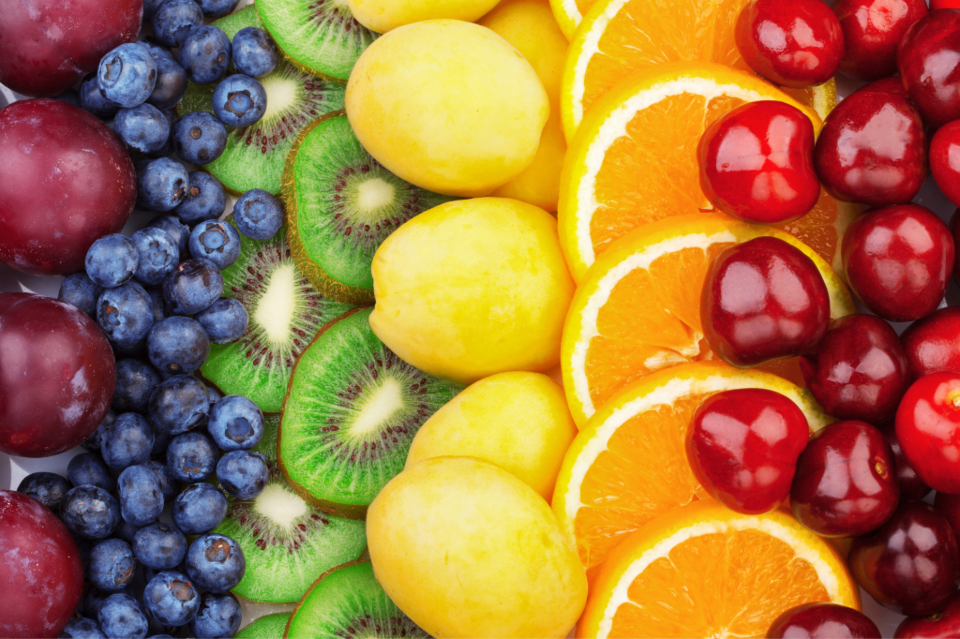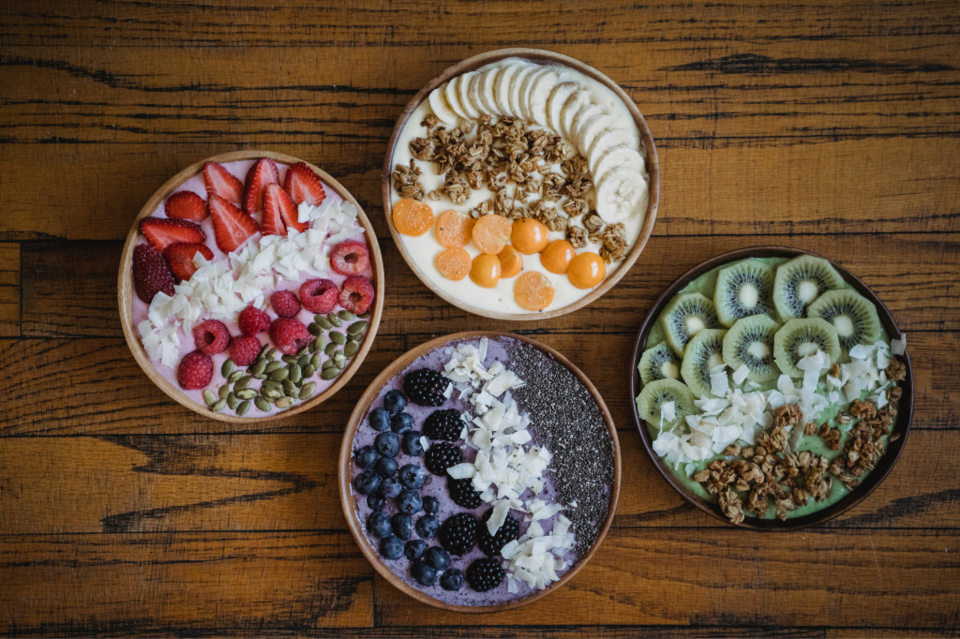In general, the bold colours found in fruits indicate a large concentration of antioxidants. These vitamins and compounds perform many different functions within the body, but all antioxidants help reduce “free radicals,” or potentially harmful atoms that interfere with normal cell functioning in our bodies.
Eating a variety of colours through fruits will help ensure that you’re adding a mix of these antioxidants to your diet, promoting good overall health. If you’re looking for ways to increase your intake of specific vitamins and minerals, read ahead for the rainbow array of fruits you can add to your plate today.
Red
Red fruits are plentiful and can contain a variety of vitamins and minerals - they’re also easy to source year-round, so including these fruits in your diet (whether they’re fresh, frozen, or dried) should be easy. Folate is an essential vitamin that can easily be found in many red fruits. A natural form of vitamin B9, folate is especially important for pregnant women to ensure proper brain and bone development in the fetus - but everyone benefits from folate’s promotion of healthy organ function. Strawberries and raspberries contain high amounts of folate, along with vitamin C, for immune health. Cranberries are another “berry powerhouse” and can help you avoid urinary tract infections by preventing bacteria from lining the walls of your urinary tract. Similarly, they may also help kill bacteria elsewhere in your body to help fight infections everywhere.
Orange
If your first instinct for an orange fruit is to reach for an orange, then you can’t go wrong. With high levels of vitamin C for immune health and fibre for proper digestion, oranges are a staple for a reason. If you want to branch out a bit, however, try eating papaya and apricots; these orange fruits have high levels of beta-carotenes (vitamin A) to help improve eye health and improve wound healing/healthy skin. However, cantaloupe is the clear beta-carotene winner in the fruit category, so if you’re looking for a mellow fruit that packs a vitamin punch, head to the melons.

Green
Not many ripe fruits maintain their green colour, so finding these additions to your diet can be a little trickier. However, it’s important to incorporate green fruits since the chlorophyll that gives them a green colour carries many potential health benefits, including improved wound healing and improved ability to detoxify your liver.
The kiwifruit is perhaps one of the best-known green fruits, and it packs a vitamin punch: with lots of vitamin C for immunity and fibre to help digestion, this fruit is a great addition to your meal. Don’t forget that avocados are also fruit, so adding this heart-healthy creaminess to your plate is a great idea. Green fruits (and especially avocados) are also high in vitamin E that promotes skin and eye health.
Blue
You’ve likely heard that blueberries are a “superfood” because of their antioxidant punch – and that’s why they should be a regular part of your diet. The rich blue colour in blueberries (and blackberries/elderberries) comes from polyphenols, a type of plant compound that produces high levels of anthocyanins (powerful antioxidants!). These high levels of antioxidants have been shown to help combat chronic health issues such as heart disease and diabetes - the vitamin C and vitamin K in these berries are also important for continued skin, eye, and immune health. You may not be familiar with blue tomatoes, but their nutrients are equally impressive. Like red varieties, blue tomatoes are high in lycopene, a vitamin essential to eye and heart health in aging individuals, and vitamin C.
Yellow
Yellow fruits are easy to find and very popular (for good reason). Mangoes are an often-overlooked yellow fruit that can offer many benefits. The vitamin K found in mangoes helps blood to clot correctly and can also help strengthen bones. Mangoes are also the source of mangiferin, a compound that can potentially reduce inflammation throughout your body, including in the heart. Other yellow fruits that are high in vitamin C and folate, such as pineapples and bananas, are great additions to your diet, as well.
Purple
The deep purple colour in many fruits signals a high concentration of antioxidants, so like other coloured fruits, purple items are a great addition to your diet. Many purple fruits also have high levels of potassium, calcium, and magnesium, so these rich hues bring more than just colour to your plate. Figs are among the best options in this colour family and go well with sweet and savoury meals. Plums and acai berries are also popular purple fruits for their added benefits when dried or concentrated. Try prunes (dried plums) to help ward off constipation and acai berries to help lower cholesterol.
Not only are fruits delicious and nutritious, but with so many colours to choose from, you can eat the rainbow every day!





